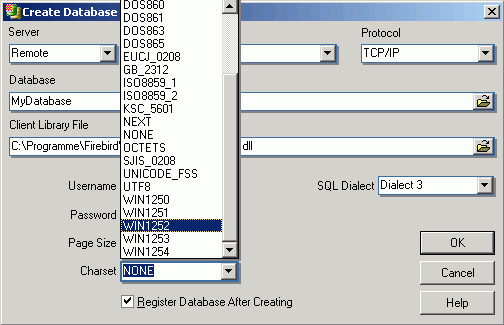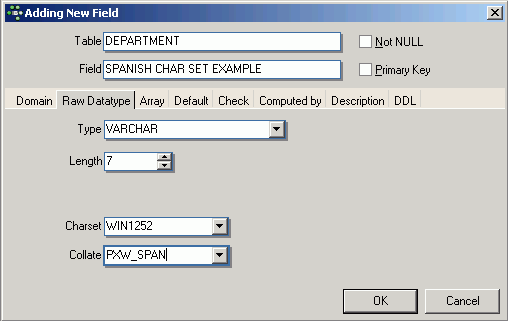Charset / Character set
<< CHAR | IBExpert Glossary | Check constraint >>
A character set is specified in Firebird to define which characters are allowed in a CHAR, VARCHAR or BLOB field. It also provides collation options when Firebird needs to sort a column.
Character sets and their collations need to be considered very carefully when defining the database metadata. For those with little previous experience with character sets, we strongly recommend first reading the following articles:
and, depending on your database version:
- Overview of the main character sets in Firebird
- InterBase® character sets and collation orders
- New character sets in Firebird 2.5
- New character sets in Firebird 2.1
- New character sets in Firebird 2.0
- Firebird 2.0 Language Reference Update: Character set NONE
- Firebird 2.1 Release Notes: International Language Support (INTL)
- Firebird 2.1 Release Notes: Appendix B: International character sets
Character sets can be defined for the database (default character set):

or for domains and fields (where the collation can also be specified):

Declaring character sets on the client side is explained in detail in the Database Technology article, Character sets and Unicode in Firebird.
SET NAMES specifies the character set to use for subsequent database attachments in an application. It enables the server to translate between the default character set for a database on the server and the character set used by an application on the client.
See also:
Default character set
Table Editor
Create Database
Character sets and Unicode in Firebird
Convert your Firebird applications to Unicode
Overview of the main character sets in Firebird
InterBase® character sets and collation orders
New character sets in Firebird 2.1
New character sets in Firebird 2.0
Firebird 2.0 Language Reference Update: Character set NONE
Firebird 2.1 Release Notes: International Language Support (INTL)
Firebird 2.1 Release Notes: Appendix B: International character sets
back to top of page
<< CHAR | IBExpert Glossary | Check constraint >>







